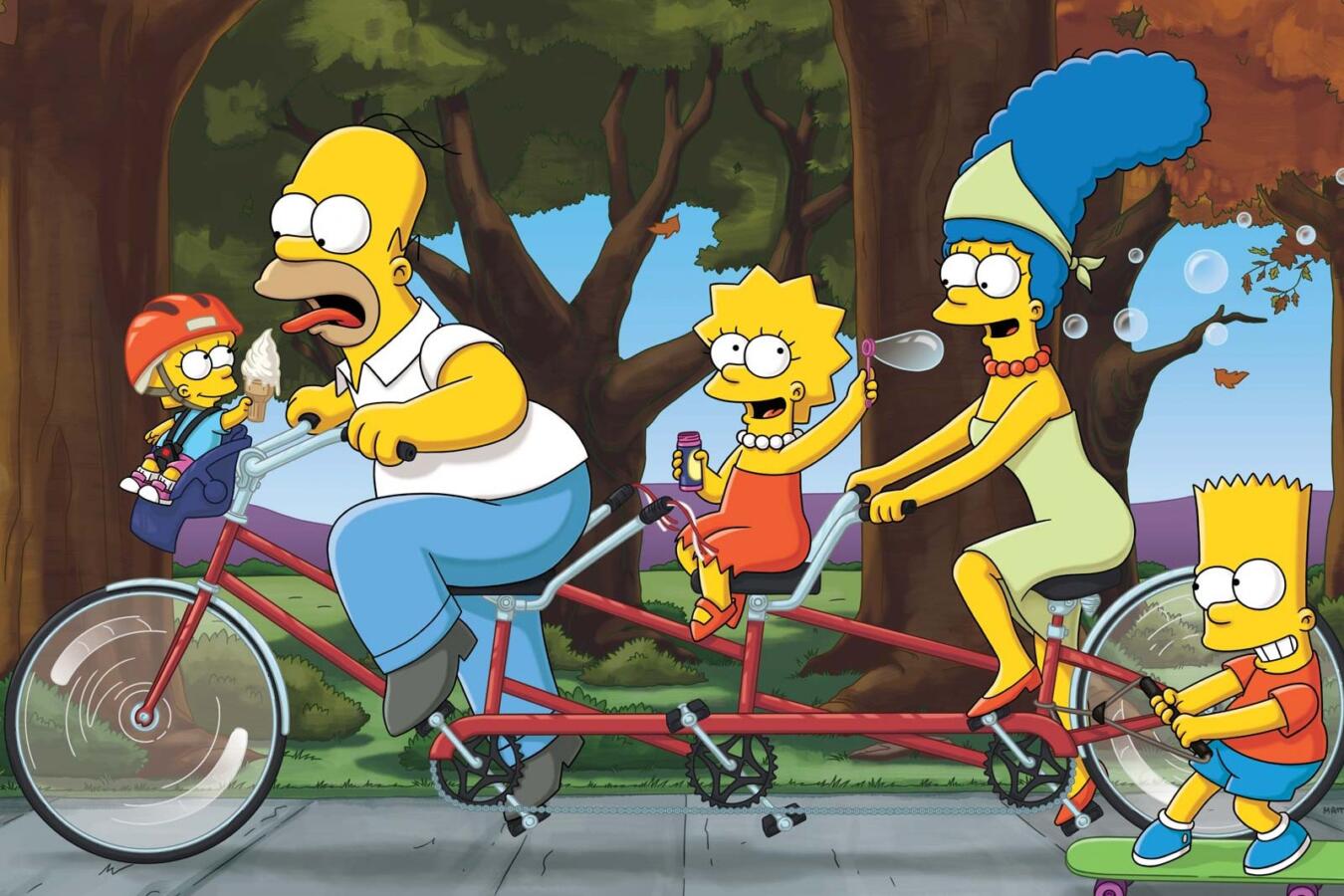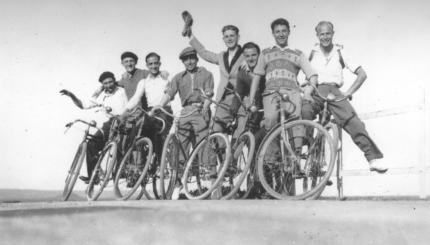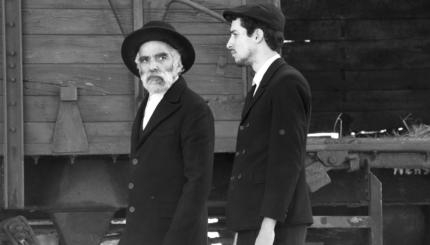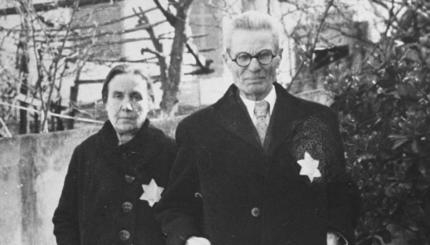The many jokes squeezed into each episode of the phenomenally long-running animated TV series The Simpsons weave together two distinct strands of humor: On the one hand, the snarky, iconoclastic nastiness embodied by Harvard University’s Lampoon magazine; and on the other, the dark, rapid-fire, angst of Borscht Belt tummlers (“roisterers”) and shpritzers (“sprayers”) such as Lenny Bruce and Don Rickles.
None is more typical of this Jewish strain of humor than the exchange between Bart’s friend Milhouse and Lisa in the Exodus segment of the episode, “Simpson Bible Stories.” In this dream sequence, Milhouse is Moses. He has just led the Israelite slaves across the Red Sea, only to learn that what lies ahead is 40 years of wandering in the desert. But after that, he asks Lisa hopefully, “it’s clear sailing for the Jews, isn’t that right?” Lisa, unwilling to break the news of what the next 3,000 years holds for the Chosen People, smiles tightly and says, “Well, more or less.”
Jewish Springfield
There is an Orthodox synagogue in town, with the improbable name of Temple Beth Springfield, located not far from Reverend Lovejoy’s First Church of Springfield. The two houses of worship are so close, in fact, that once the church marquee carried the decidedly non-ecumenical message: “No Synagogue Parking.”
Otherwise, relations between Lovejoy and Rabbi Hyman Krustofsky are cordial. The rabbi, bearded and dressed in the black garb of the Hasidim, is a regular on the minister’s weekly call-in radio show, “Gabbin’ about God.” Orthodox rabbis are often wary of such interfaith dialogues, but Krustofsky does not conform to this stereotype. According to The Simpsons’ Guide to Springfield, the rabbi plays basketball against Lovejoy in the annual “Springfield Two-Man Interfaith Jimmy Jam.” Each Friday, according to the same guide, the synagogue offers a regular Friday Sabbath dinner that includes gefilte fish and Manischewitz wine….

Help us keep Jewish knowledge accessible to millions of people around the world.
Your donation to My Jewish Learning fuels endless journeys of Jewish discovery. With your help, My Jewish Learning can continue to provide nonstop opportunities for learning, connection and growth.
Jewish references thread through The Simpsons, and they sometimes reinforce stereotypes. The local Jewish hospital is considered the best, if the most pricey, according to an ambulance driver. An unnamed Jewish child can be seen in an occasional suburban crowd scene, called in from the playground to practice his music.
There is still an “old neighborhood” downtown, Springfield’s Lower East Side, where Jews lived before moving to the suburbs. This is where Krustofsky’s synagogue is located and where visitors can dine at restaurants such as Tannen’s Fatty Meats and Izzy’s Deli. In real life, if there were enough Jews in Springfield, the synagogue would have followed the migration from the urban center to the suburbs, the pattern in most American cities of any size. Thus, the town’s small Jewish community is marginalized and often misunderstood in ways that are still common in small Protestant communities in the American heartland.
Related problems facing modern American Jewry in such towns — assimilation and how to fit into an overwhelmingly Christian society — are raised in various ways in The Simpsons. Thus, we learn that Kent Brockman, the local television news anchor and member of Springfield Community Church, started his broadcasting career as Kenny Brockelstein and still wears a pendant around his neck with the Hebrew word chai (life).
This environment gives rise to a kind of unconscious anti-Semitism. For example, Lovejoy keeps the rabbi’s address and phone number on his “non-Christian Rolodex.” At the elementary school, Principal Skinner is heard fielding an angry call from the superintendent. “I know Weinstein’s parents were upset,” he stammers. “But, but, ah, I was sure it was a phony excuse. I mean, it sounds so made-up: ‘Yom Kip-pur.” The Day of Atonement, the holiest day of the year for Jews, is completely unfamiliar to the school principal.
When Homer needs $50,000 for a heart bypass, he goes to the rabbi, pretending to be Jewish in the only way he knows how. “Now, I know I haven’t been the best Jew, but I have rented Fiddler on the Roof and I will watch it,” he says. All he gets from the rabbi is a dreidel. In another episode, while visiting New York City, Homer mistakes several rabbis–black-clad and bearded–for the Texas rock group ZZ Top, who favor the same attire plus sunglasses. Finally, Bart works a sympathy scam in the shopping mall wearing a yarmulke, pretending that his cake has just been smashed.
Krusty the Jewish Clown
Just as Ned Flanders and Reverend Lovejoy embody Protestant Christianity on The Simpsons, the character Krusty the Clown represents the Jews. The host of a popular children’s show on the local television station, Krusty was introduced during the 1989-1990 season in a short for The Tracey Ullman Show. Series creator Matt Groening, who wrote the episode, said in an interview that Krusty came as “a sudden inspiration on the part of a couple of writers” for the show….
Krusty’s show on The Simpsons features live gags and routines before an audience of kids, along with violent cartoons starring a cat and mouse named Itchy and Scratchy. And Krusty is Jewish, very Jewish. His picture forms a stylized Jewish star on his dressing room door. Yet Dalton, Mazur, and Siems, in their book God in the Details, see Krusty as “a gross caricature of a stereotypical secularized Jew corrupted by wealth and fame” who “dislikes children (and) finances his lavish debt-ridden lifestyle by over-marketing his own image unabashedly.”…
Yiddish expressions, usually voiced by Krusty, abound: tucchus (butt) and yutz (empty head), plotz (burst), bupkes (nothing), ferkakteh (execrable), schlemiel (bungler), and schmutz (mess). The clown refers to his long-lost daughter as “my lucky little hamentaschen,” a reference to triangular pastry eaten on the holiday of Purim. Other Yiddish words and puns and double entendres also pop up. Springfield’s miniature golf course is sometimes (but not always) called “Sir Putts-a-Lot.” The Yiddish word putz means penis. Krusty’s middle name is “Schmoikel,” which sounds like the diminutive of another Yiddish term for penis.
There are other in-jokes that were obviously written by Jews for other Jews. A casino boat travels from Springfield beyond the territorial limit to allow activities forbidden by U.S. law. In a fleeting shot, a man in a tuxedo, under a canopy, is seen marrying a cow in what is clearly a Jewish wedding ceremony–then the groom smashes with his foot a glass wrapped in a napkin.
The Jewish content of The Simpsons inspired one fan, Brian Rosman, a health policy researcher at a Brandeis University think tank, to create a website that features still shots from the episode “Like Father, Like Clown” under the heading, “Jewish Life in Springfield.”
Rosman believes that: “The Simpsons does the funniest, most authentic parodies of Jewish life among all the comedy shows on TV, certainly compared to shows that are considered more ‘Jewish,’ like Seinfeld. The Simpsons demonstrates a more intuitive understanding of American Jewish history, Jewish religion and culture, and Judaism’s place among all the other varieties of belief and identity in America. I only wish there was more Jewish content on the show, because when they do it, they do it very well.”
Crypto-Jewish Springfield
Actually, there may be more than Rosman realizes. Apart from Krusty, The Simpsons from time to time suggests an underlying element of what might be called “crypto-Judaism.” In one of the opening chalkboard sequences, Bart writes, “I am not the reincarnation of Sammy Davis Jr.” While watching the “Rapping Rabbis” on television, Homer asks Marge, “Are we Jewish?” Sight gags in the series also extend this conceit. A menorah–the candelabra–is seen in the Simpsons’ family storage closet, without comment on how or why it got there.
Several other characters in the show, ostensibly not Jewish, can be read by their names and their view of life as otherwise distinctly Jewish: Homer’s father, Abe, and Marge’s twin sisters, Selma and Patty Bouvier.
In manner and disposition, Abe, a child immigrant from “the old country,” is every alte kocker (old fart) sitting around a swimming pool in Miami Beach, complaining about his declining health and the ungrateful younger generation. His absent wife, Penelope Olsen, Homer’s mother, is a ’60s radical and free spirit whose anti-germ warfare activities forced her underground for 25 years. Her Scandinavian name notwithstanding, she could be Jewish; she fits the profile.
The Bouvier sisters are also familiar types: sharp-tongued unmarried aunts and sisters-in-law, their dialogue taken directly from the late Selma Diamond or Fran Leibowitz or Sandra Bernhard. And according to Matt Groening’s The Simpsons Uncensored Family Album, Montgomery Burns’s sister, Cornelia, has five grandsons named Bernstein: David, Levi, Moshe, Murray, and Saul.
So, latent or blatant, is the portrayal of Jews in The Simpsons on balance a positive one, likely to encourage understanding among society at large? Rabbis seem to think that itis, although not entirely without qualification.
Rabbi Steven Engel of the Congregation of Liberal Judaism, a Reform temple in Orlando, says, “For Jews, humor has always been as reflective as our holy writings and sacred liturgy in expressing our feelings, concerns, aspirations, and in bringing to light the realities we face. Our general understanding is that humor has contributed to our ability to survive as a people. There is no question that The Simpsons’ Springfield in many ways accurately reflects the feelings, concerns, aspirations, and realities of contemporary Jews. It is certainly funny stuff and does make people laugh. But is it good for the Jews? I suppose that depends upon who is doing most of the laughing, why they are laughing, and to whom the laughter is directed.”
Reprinted with permission from The Gospel According to The Simpsons (Westminster John Knox Press).
mitzvah
Pronounced: MITZ-vuh or meetz-VAH, Origin: Hebrew, commandment, also used to mean good deed.

Help us keep Jewish knowledge accessible to millions of people around the world.
Your donation to My Jewish Learning fuels endless journeys of Jewish discovery. With your help, My Jewish Learning can continue to provide nonstop opportunities for learning, connection and growth.



